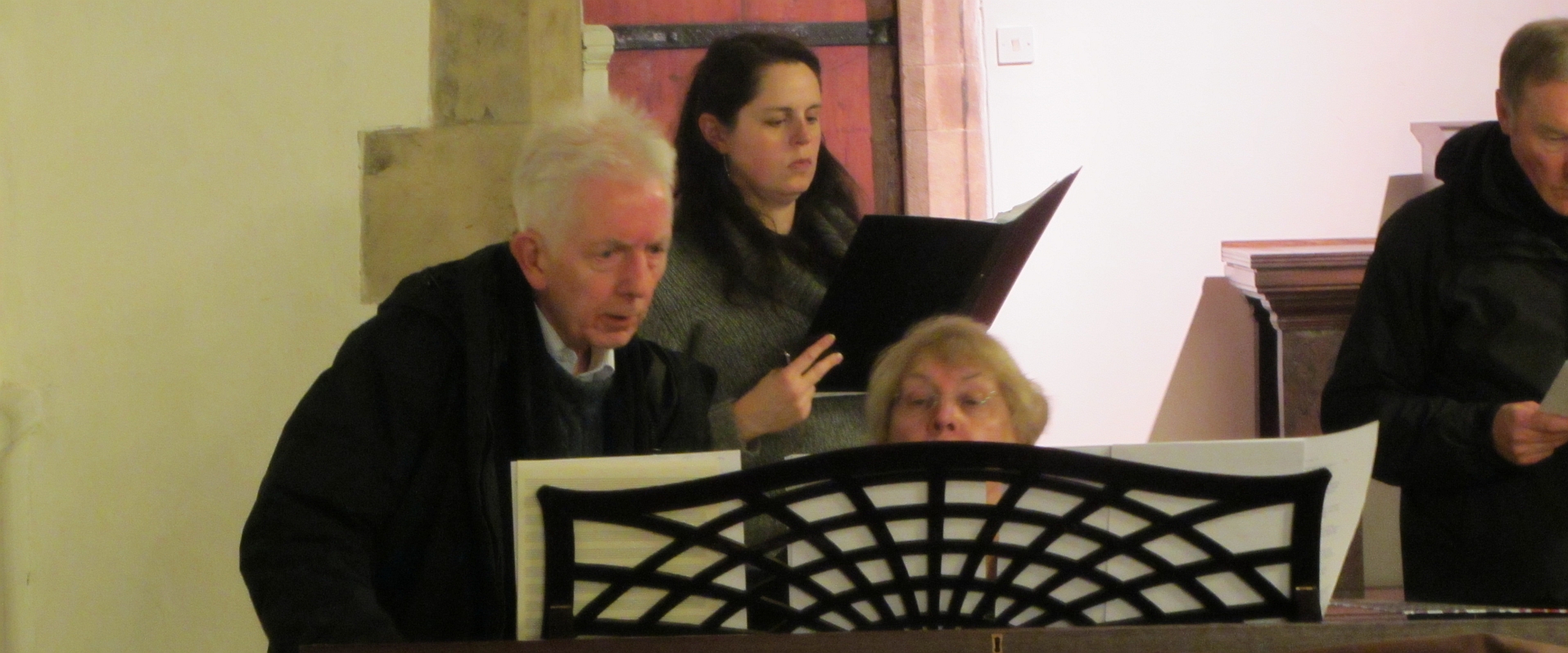
Rehearsing the music for Peregrini. Photo credit: Mike Huxtable.
Because the manuscript in which Peregrini is preserved lacks musical notation, the musical setting used in this production cannot claim to be the original one (if, as seems probable, the play was meant to be sung). However, it does make use of melodies that we know could be found in Durham when Lawrence was writing, most of which are sequences which were just coming into use as additions to liturgical sources. The main sources for the melodies are Durham University Library, MS Cosin V.v.6, which was originally copied in Canterbury in the late eleventh century but has twelfth-century additions made in Durham, and Cambridge, Trinity College MS 0.3.55, a twelfth-century manuscript from Durham including chants for St. Oswald, some of which have been adapted for our play. Most of the chosen melodies were originally used for accentual rhyming verse like that used by Lawrence in the Peregrini, so we can say that these are melodies that were known in Durham in the mid-twelfth century and could have been used in the play. For example, the final procession, which is a sequence text, is set to several stanzas of the sequence ‘Laudes crucis’, a work for feasts of the Cross which was wildly popular in twelfth-century Europe – some audience members may recognise it, as it was later used by Thomas Aquinas for his Corpus Christi poem ‘Laude Sion’. This melody was added to MS Cosin V.v.6, so we can be sure that it was known in Durham in the mid-twelfth-century. To use it at the end of an Easter play like the Peregrini is theologically appropriate, since it originated as a celebration of the triumph of the Cross.
In the two long solos sung by Jesus when he appears to the apostles and to Thomas, Lawrence uses a different poetic style, and here we do not use melodies designed for accentual texts, but rather a responsory from English manuscripts that was sung during the Easter period and actually includes some of the words Jesus sings. In the repeat of this melody, Thomas sings the verses to the more elaborate respond of Jesus.
As an author, Lawrence was known for his use of irony. Several of the melodies we have used are chosen not only for their styles and dates but also for their meanings, some of which are used ironically. For example, the apostles who doubt the women’s report that the risen Jesus has appeared to them sing their words to the well-known melody of a chant for Mary Magdalene, one that was often used in Easter plays from the period.
Music notes by Margot Fassler, Keough-Hesburgh Professor of History and Liturgy, University of Notre Dame.
